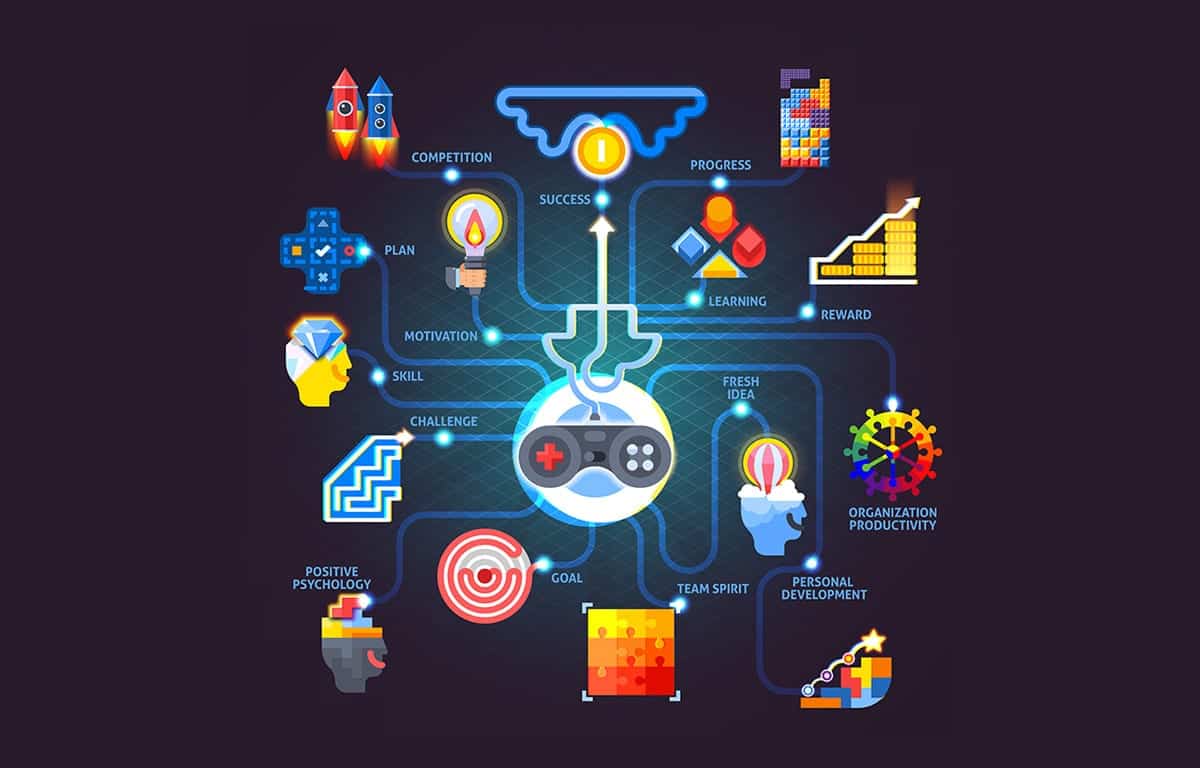The Science Behind Gamification

You’ve probably heard of gamification. The term has become quite popular among corporations, with more and more firms opting to include the strategy in their business model every year. At present, the gamification market is estimated to grow from $9.1 bn in 2020 to $30.7 bn by 2025. That is a considerable market jump.
Why are the projections showing such a significant rise? The answer is simple. Using gamification increases profits threefold. You can retain more employees, improve team accountability, and increase employee performance. And as soon as companies began seeing these benefits, they hopped on the gamification train; countless more are doing so every day.
But how does adding a few games and leaderboards to a workplace achieve these miracles? Are you tired of hearing about the wonders of gamification and want to know what happens behind the magic curtain? Because if so, you’re not alone. Today we’re analyzing the science of gamification and how it shapes human behavior.
What gamification looks like
Before getting into the exact science of gamification, we’re going to go over what gamification is and what it looks like. In the simplest terms, gamification makes working fun. Whether you’re learning a language, working in a sales team, or buying food from an online delivery service, everything can be gamified.
For instance, if you’re learning a language, companies can include progress bars, XP points, badges, and leaderboards. On the other hand, food delivery services can give out badges for ordering pizzas on the weekend or during lunch hours.
Essentially, gamification gives rewards for certain actions. There is no limit or restriction on what these actions are and who is doing them.
The science
Gamification sounds a lot like a video game where the employee is a player and meeting a KPI is equal to slaying a dragon, which gets them a gold medal, and getting this validation is what drives them. While this is true to a large extent, gamification is a bit more complex and nuanced than that.
There are a few layers to the concept, and to understand the exact science behind it, we’ll be breaking it down into four components.
Setting the challenge
It is human nature to like rewards. However, it is also human nature to want to feel that you deserve those rewards. For gamification to be successful, the goals and targets need to be set appropriately. According to the skills of your target player, set the goal such that it is difficult enough for the badge to be meaningful but not too difficult, or getting the badge won’t be worth it. Finding the middle ground is the science of it.
Show the results
Once you’ve played a game, you want to know how you’ve done. The beauty of gamification is that you can use leaderboards to display results. Now people can see how they’ve performed relative to their co-workers and receive feedback at the same time. This creates healthy competition, which increases productivity.
Ownership
Gamification uses basic human tendencies and uses them to mold behavior. A typical human tendency is a desire to maintain control over your property. And this belief extends to abstract scoreboards and XP points. Once an employee has certain advantages, they will work hard to keep their position on the leaderboard or not lose points.
Positive reinforcement
People also like compliments and recognition, and gamification is the best way to offer it to them. Whenever an employee reaches a goal, they get rewarded for it. This releases dopamine and makes them feel good. Since dopamine is addictive, employees will want to recreate the action that led to the feeling, thereby increasing work productivity by meeting more goals.
Conclusion
The science behind gamification is interesting because once you understand how companies use it, it seems obvious. People want to feel good about themselves, and so they repeat actions that give them a dopamine rush.
Reward them for doing their work, and they’ll increase productivity because it’ll be fun. Humans are naturally competitive and want to do well – put them on a leaderboard, and they’ll compete for the top spot.
Gamification works because the science behind it is simple, straightforward, and makes use of the most basic of human values. Therefore, it’s no surprise that companies have begun using it at an exponential rate.
Spinify
If you want to gamify your workplace, contact Spinify. With tons of experience, we know what you need and how to get your workers motivated. We have everything from badges to KPI coaching and gamified competitions available on our website and are inspired to help you achieve your highest potential.
Each feature is customized for you and is super easy to set up and navigate around. So contact us now and get ready to see a company-wide transformation. We look forward to hearing from you.
Put those insights into practice.
Set your team up for success by improving their performance through gamification.
Back to blog







